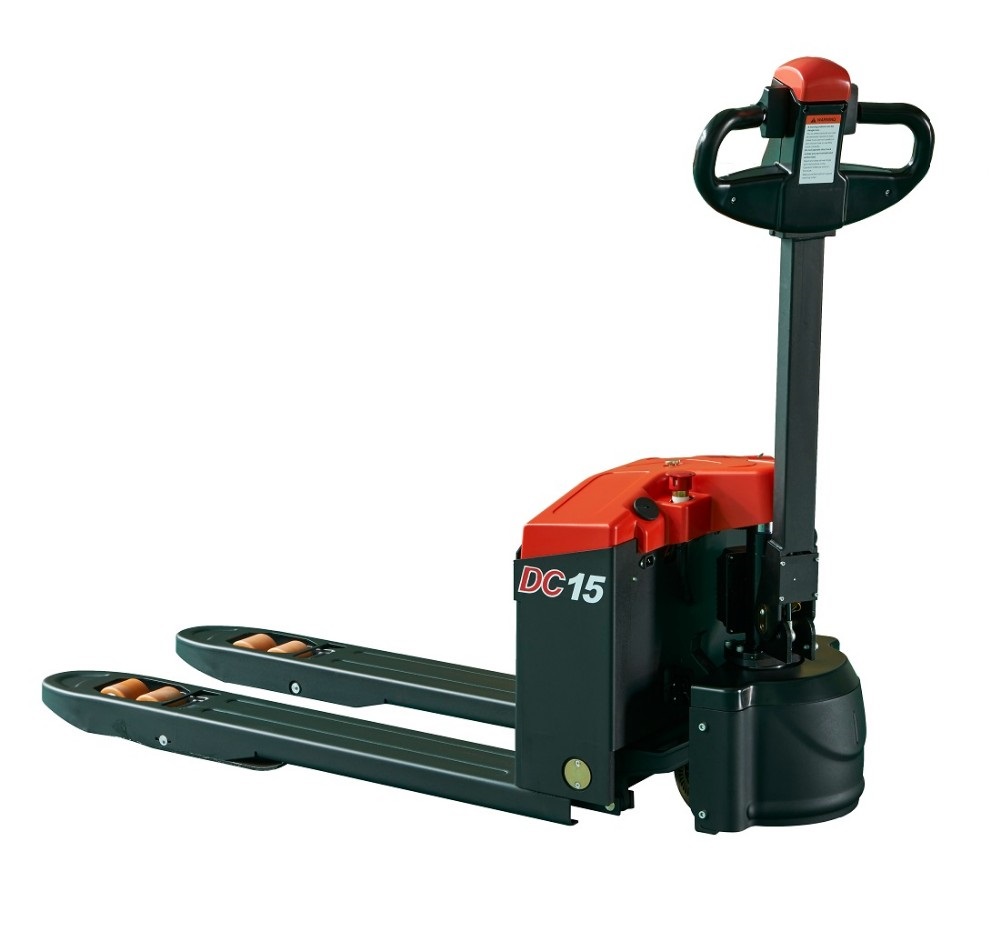
Battery operated pallet truck/hot sale 3 Ton electric forklift
Keyword:Electric Pallet Trucks Time:2019-11-3 23:09:20
Types of Electric lifter Trucks with the Highest Frequency of Use
At present, most enterprises have adopted mechanical equipment instead of manual operation, thus improving production efficiency. The electric lifter industry also conforms to the development of the times, and has studied and invented many types of lifter. Let's talk about the most frequently used types of electric lifter.
First: Forklift Lifter truck. Lifter truck is a kind of industrial transport vehicle and storage lifter truck. It refers to the forward wheeled transport vehicle for loading and unloading, stacking and short-distance transportation of pallet cargo. Battery drive is usually used for transportation of large objects. The load-carrying capacity of forward-moving electric lifter truck is 1-2.5 tons. The portal frame can be moved forward or retracted as a whole. When retracted, the working channel width is generally 2.7-3.2 meters, and the lifting height can reach about 11 meters. It is often used for stacking and picking up operations of medium height in warehouses.
Second: Electric pallet carrier. Electric pallet truck is also called electric pallet truck or electric pallet truck. It is suitable for heavy-duty and long-term cargo transshipment. It can greatly improve the efficiency of cargo handling and reduce labor intensity. The load-carrying capacity of electric pallet truck is 1-1.6 tons, the working channel width is generally 2.3-2.8 meters.The structure of the electric pallet truck has more portal frames than that of the electric pallet truck. The lifting height of the fork is generally within 4.8 meters. It is mainly used for goods stacking and loading and unloading in the warehouse. No need to ship the whole pallet, but according to the order to select a variety of goods to form a pallet, this link is called picking.
Third: Storage electric lifter. Storage electric lifter truck is mainly designed for cargo handling in warehouse. Except for a few storage electric lifter trucks which are driven by manpower, the others are driven by motors. They are widely used in the storage industry because of their compact body, flexible movement, light weight and good environmental performance. In multi-shift operation, motor-driven storage electric lifter trucks need backup batteries. Storage electric lifter truck is mainly divided into: electric pallet carrier truck, electric pallet stacker truck, forward-moving lifter truck, electric picking lifter truck, low-driving three-way stacking lifter truck, high-driving three-way stacking lifter truck, balanced heavy-duty electric lifter truck, three-fulcrum lifter truck.
Fourth: Balanced heavy-duty electric lifter. The main components of the balanced electric lifter are power device, transmission device, steering device, working device, hydraulic system and braking device. The motor is used as power and the battery is used as energy. The load-carrying capacity of the balanced heavy-duty electric lifter truck is 1.0-4.8 tons, and the working channel width is generally 3.5-5 meters. No pollution, low noise. Various working devices are equipped for expanding the operation range of lifter trucks.
In addition to the characteristics of low noise and no exhaust gas emission, electric lifter has a great advantage over internal combustion lifter in terms of use and maintenance costs. Because of its simple and flexible operation and control, the operation intensity of the operator is much lighter than that of the internal combustion lifter. The electric steering system, acceleration control system, hydraulic control system and braking system are all controlled by electrical signals, which greatly reduces the labor intensity of the operator. In this way, it is very helpful to improve the efficiency and accuracy of the work.


- No information
-
1. Design objective of electronic crane scale network management. (1) Adopt advanced distributed data processing techno…
-
Electronic crane scale bearing platform installation to focus Electronic crane scale can be installed generally on the li…


